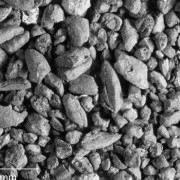Kinneret: Paleobotanical Analyses
Funding of a Paleobotanical Project within the „Kinneret Regional Project“
Stefan Münger (Bern)
The acropolis of ancient Kinneret (Tệl Kinrōt / Tell el-ʿOrēme), situated on the northwestern shore of the Sea of Galilee, was already thoroughly explored under the direction of Volkmar Fritz (Mainz/Gießen/Jerusalem) in the 1980s.
Prior to the full conservation of a tripartite pillared building dating to the Iron Age IIB, a formerly unexcavated portion in its south-western corner has been unearthed by the Kinneret Regional Project in 2004. The sediments retrieved during the excavation were processed by a team from the Institute for Integrative Prehistory and Archaeological Science of the University of Basel. Thanks to financial support of the DPV, the botanical remains were analysed by Marlies Klee (Basel). Several well-delineated clusters of charred organic material were visible to the naked eye already during excavation process. As subsequent archeobotanical analysis showed, the material almost uniquely consisted of emmer wheat (Triticum dicoccum), which was apparently stored in sacks or baskets. Most notable was the discovery that the stored grain was pre-processed, like bulgur or couscous. This further corroborates the assumption that at least some of the tripartite pillared buildings of the Iron Age IIB served as “entrepôts”, as suggested by the late Moshe Kochavi.
Further Information
Further projects funded by the Society
Dieser Beitrag ist auch verfügbar in: German









